Not far down the road from us is an old homestead. It is a mix of small log cabins, rustic farm machinery, and sadly, falling down buildings from different eras.
Old ranches like these are scattered throughout the west, remnants of a time gone by, of outlaws, pioneers, cowboys, wide open spaces, and limitless possibilities.
On May 20th in 1862, President Lincoln signed in to law the Homestead Act. It established a three-fold homestead acquisition process: filing an application, improving the land, and filing for deed of title. Any U.S. citizen, or intended citizen, who had never borne arms against the U.S. Government could file an application and lay claim to 160 acres of surveyed Government land.
For the next 5 years, the homesteader had to live on the land and improve it by building a 12-by-14 dwelling and growing crops. After 5 years, the homesteader could file for his patent (or deed of title) by submitting proof of residency and the required improvements to a local land office.
“Local land offices forwarded the paperwork to the General Land Office in Washington, DC, along with a final certificate of eligibility. The case file was examined, and valid claims were granted patent to the land free and clear, except for a small registration fee. Title could also be acquired after a 6-month residency and trivial improvements, provided the claimant paid the government $1.25 per acre. After the Civil War, Union soldiers could deduct the time they served from the residency requirements.”
On a side note, the homestead pictured in this post sits on 200 acres and is currently for sale at a price of $2475/acre.
“Physical conditions on the frontier presented great challenges. Wind, blizzards, and plagues of insects threatened crops. Open plains meant few trees for building, forcing many to build homes out of sod. Limited fuel and water supplies could turn simple cooking and heating chores into difficult trials.
Ironically, even the smaller size of sections took its own toll. While 160 acres may have been sufficient for an eastern farmer, it was simply not enough to sustain agriculture on the dry plains, and scarce natural vegetation made raising livestock on the prairie difficult. As a result, in many areas, the original homesteader did not stay on the land long enough to fulfill the claim.”
The Homestead Act was in effect from 1863 – 1986, a whopping 123 years!! It began with President Lincoln and ended with President Reagan.
During that time there were approximately 4 million claims made, 1.6 million claims “proved up” and 270 million acres distributed.
I hope you enjoyed this brief lesson on the Homestead Act. Personally, I find it quite fascinating, as I do most things about the history of the west.
But back to our local homestead.
As I was walking around, I came across some old farming equipment, one with a bush growing up through the middle of it, and lots of barbed wire scattered all through the grass.
The land is still used for grazing cattle, and I had to really keep an eye on where I was putting my feet!
I consider myself a somewhat adventurous person, and would have loved to have gone in to the old ranch house, but it was in such bad shape, I was afraid I would fall thru the floorboards and end up in the basement!
I settled for taking a picture of what I assumed was the kitchen thru this hole in the bottom of the door.
Imagine my delight and surprise when I this small panel of old wallpaper still hanging on to the wall for dear life.
Behind the house are what I believe to be two original homestead buildings.
I’m thinking this was the outhouse, although there was no 1/2 moon cutout on the door 🙂
Another view of the same cabin with the outhouse behind.
What I find interesting is that these two cabins are in much better shape than any of the buildings that are in the ranch yard.
If you are interested in reading more about the Homestead Act, the following links are a great source of information: Homestead National Monument of Nebraska, The National Archives, The History Channel
Until next time,
Happy Trails,

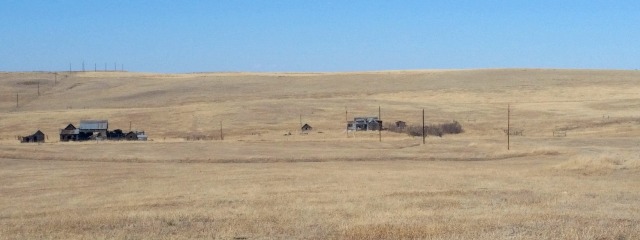
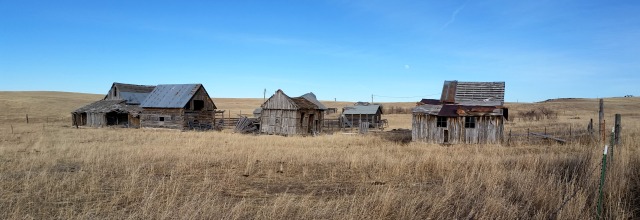
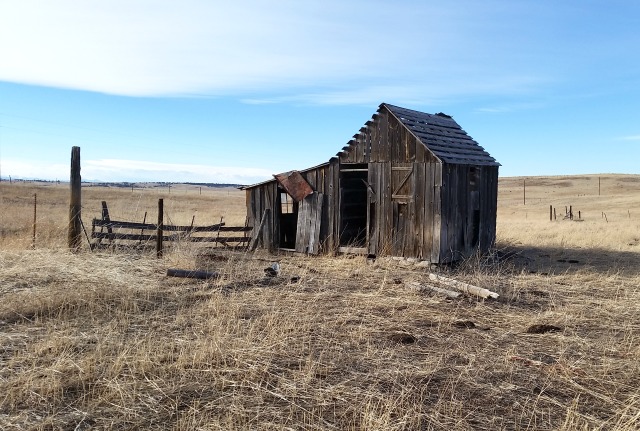
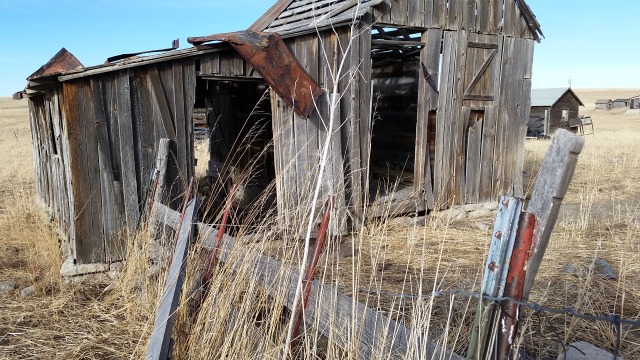
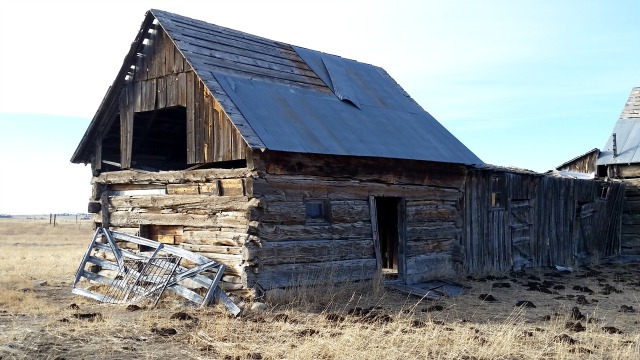
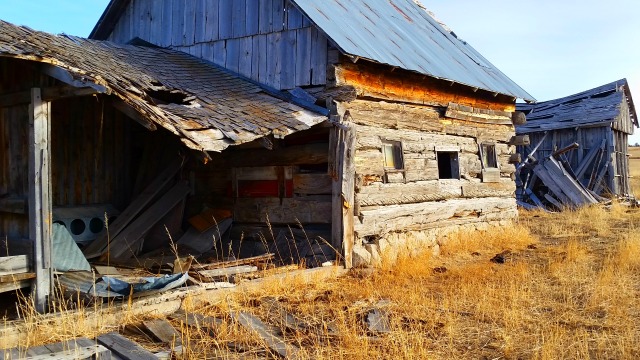
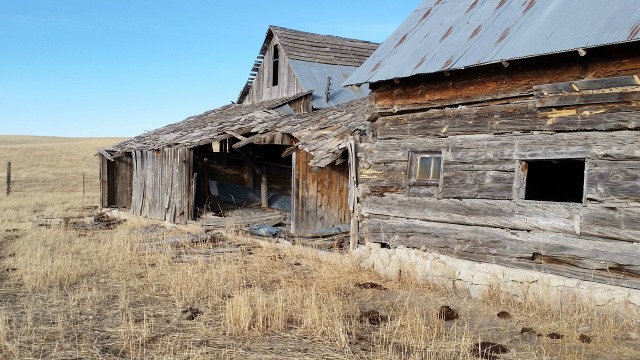
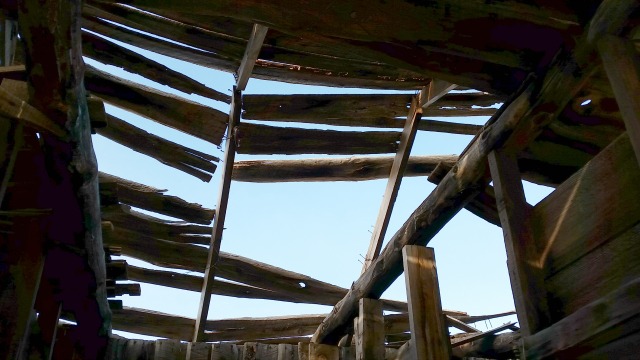
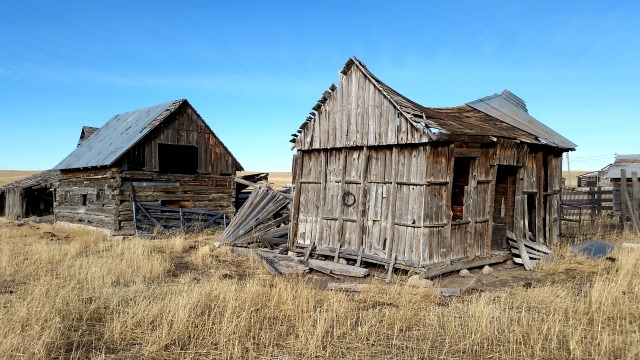
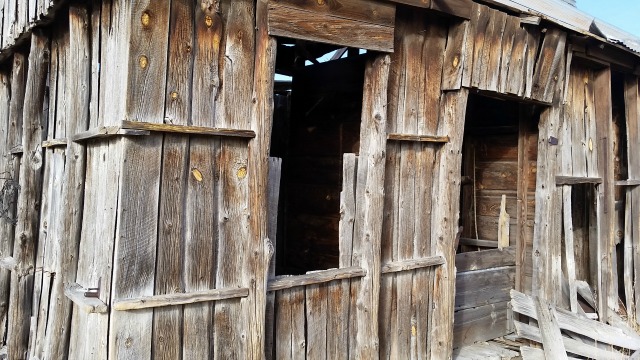
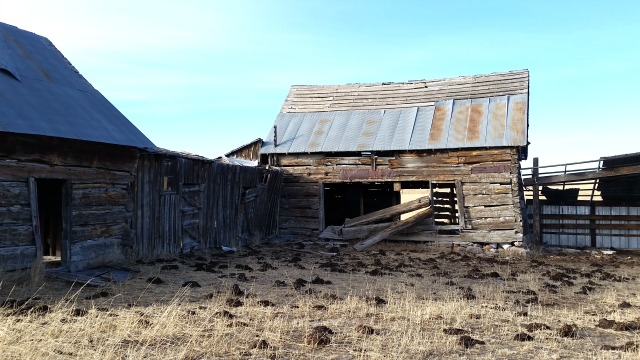
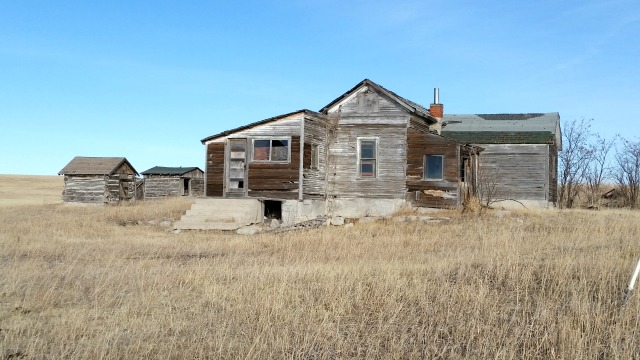
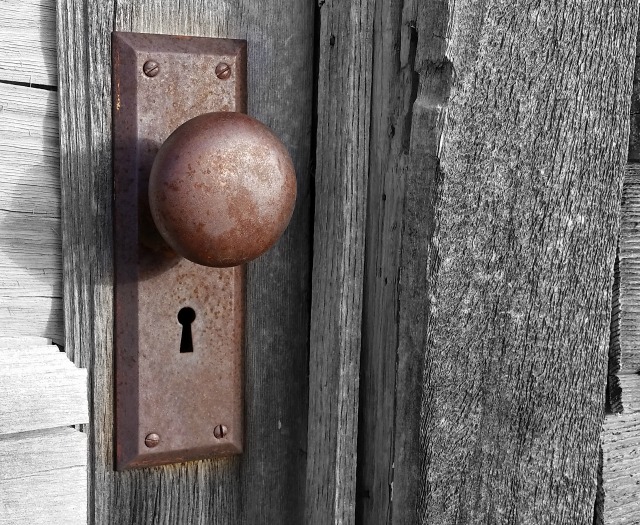
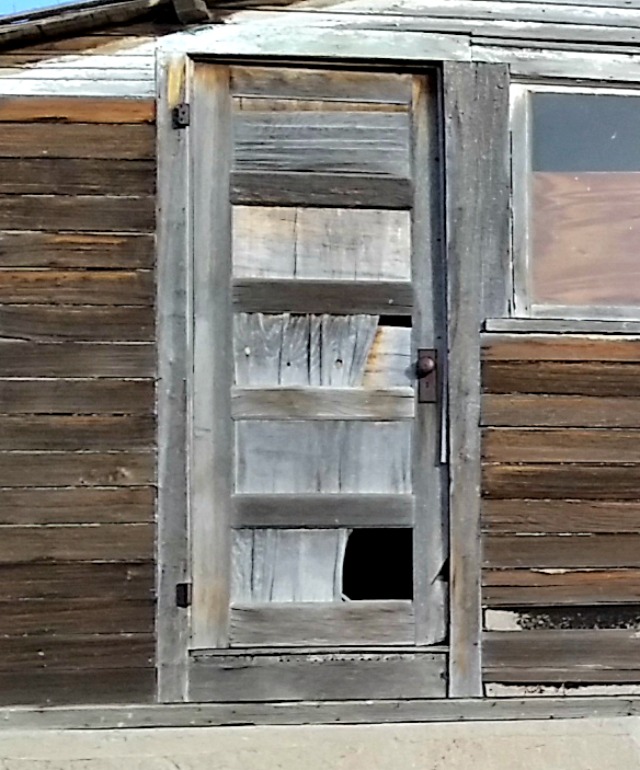
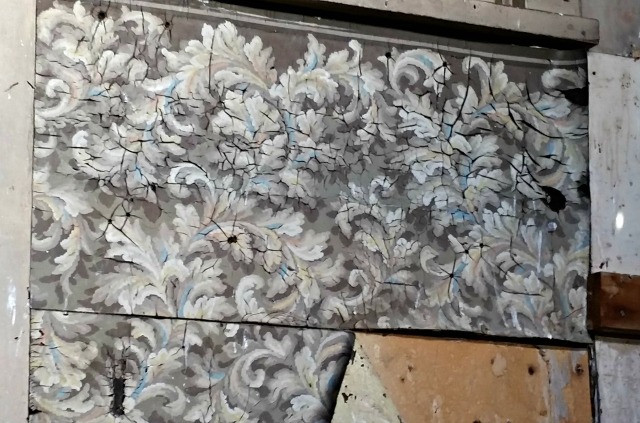
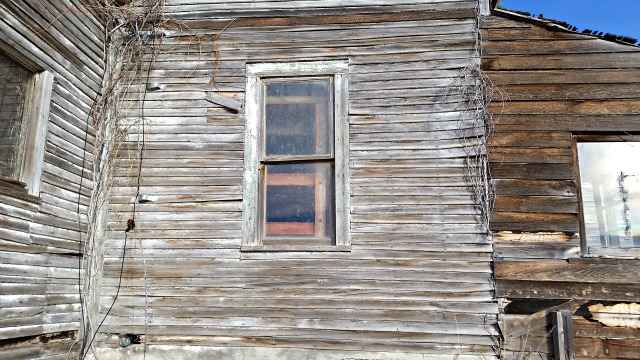
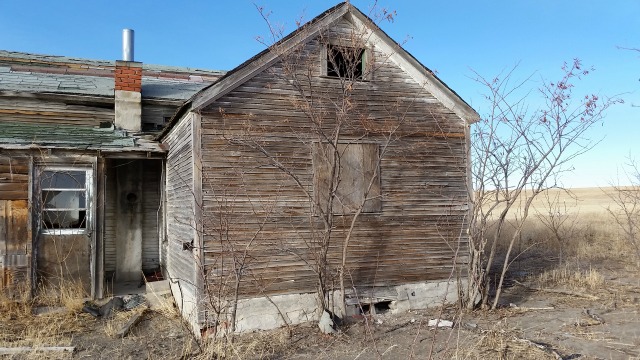
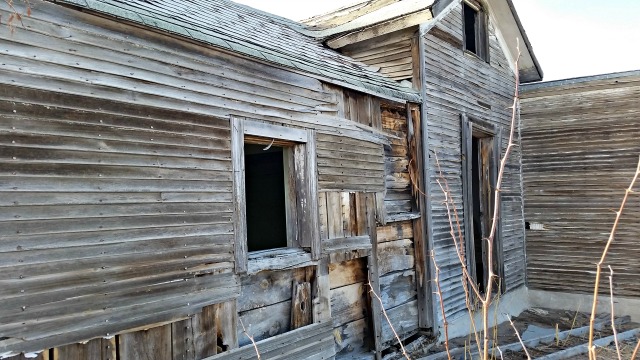
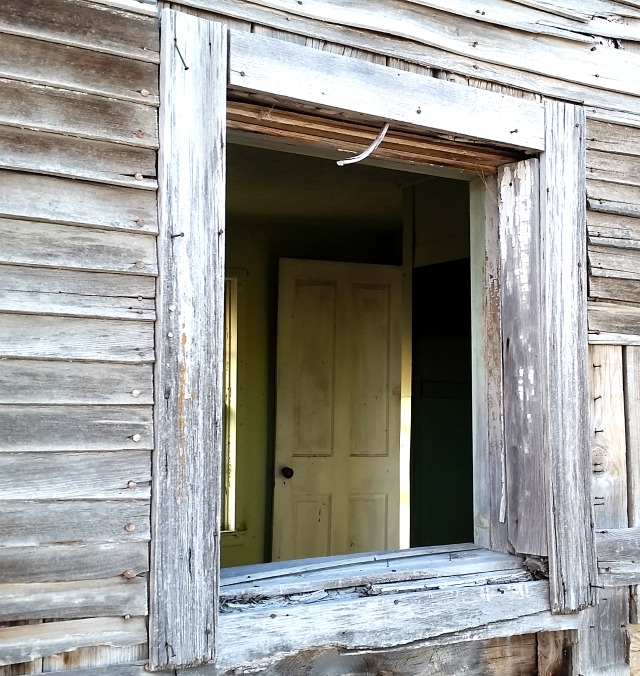
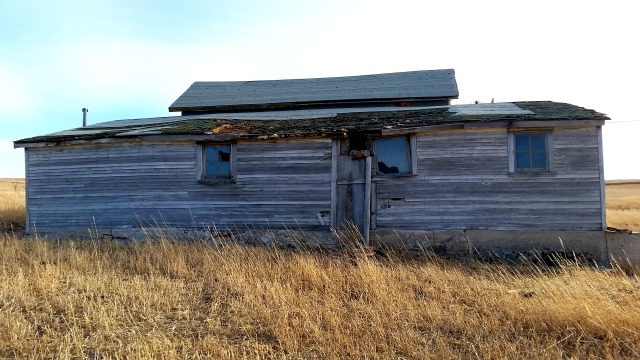
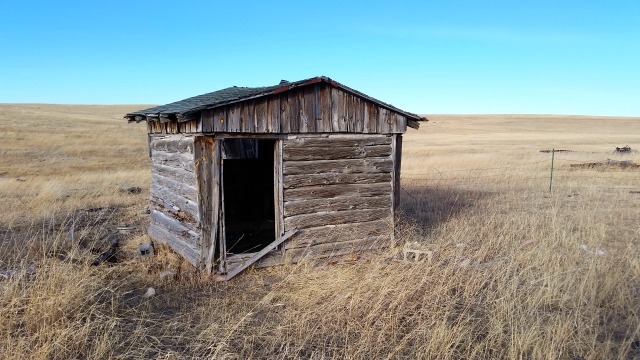
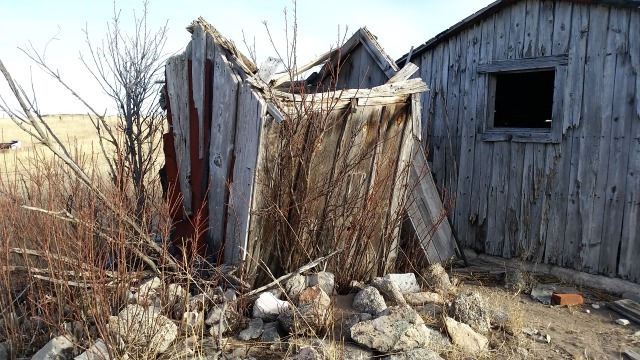
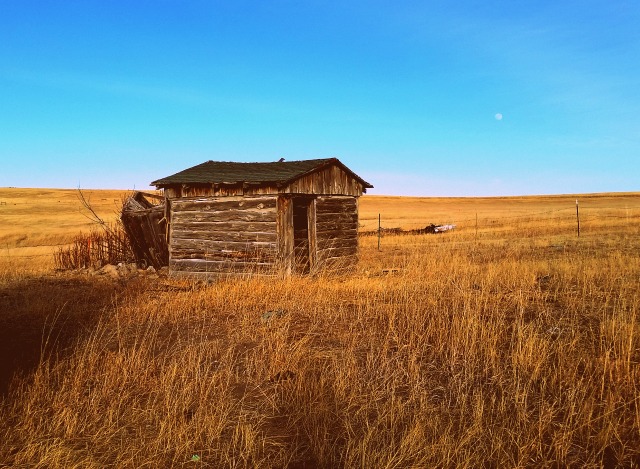
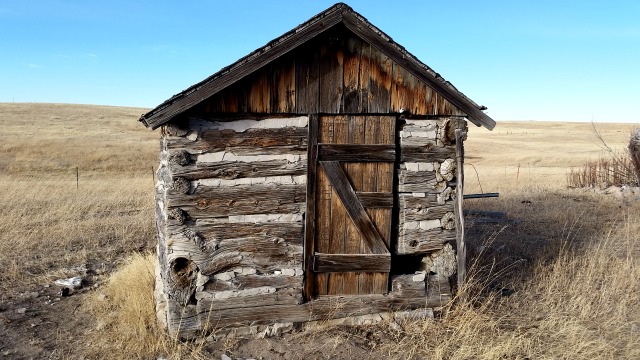
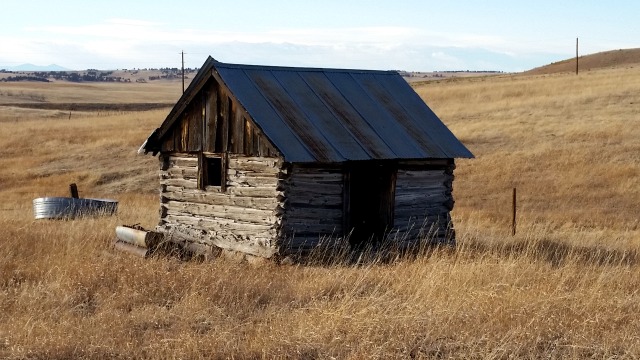

HI Ann…I can't believe I totally missed your comment!! Thanks for your kind words. The homestead is an amazing piece of history and being there is just like stepping in to the past. By the way, love your blog and your Etsy shop!!!
cool photos!
http://www.paddlinginstilettos.com/
Browse Worlds News and Trends Blog from around the world and take a chance to post on that popular blog to reach all over the world.